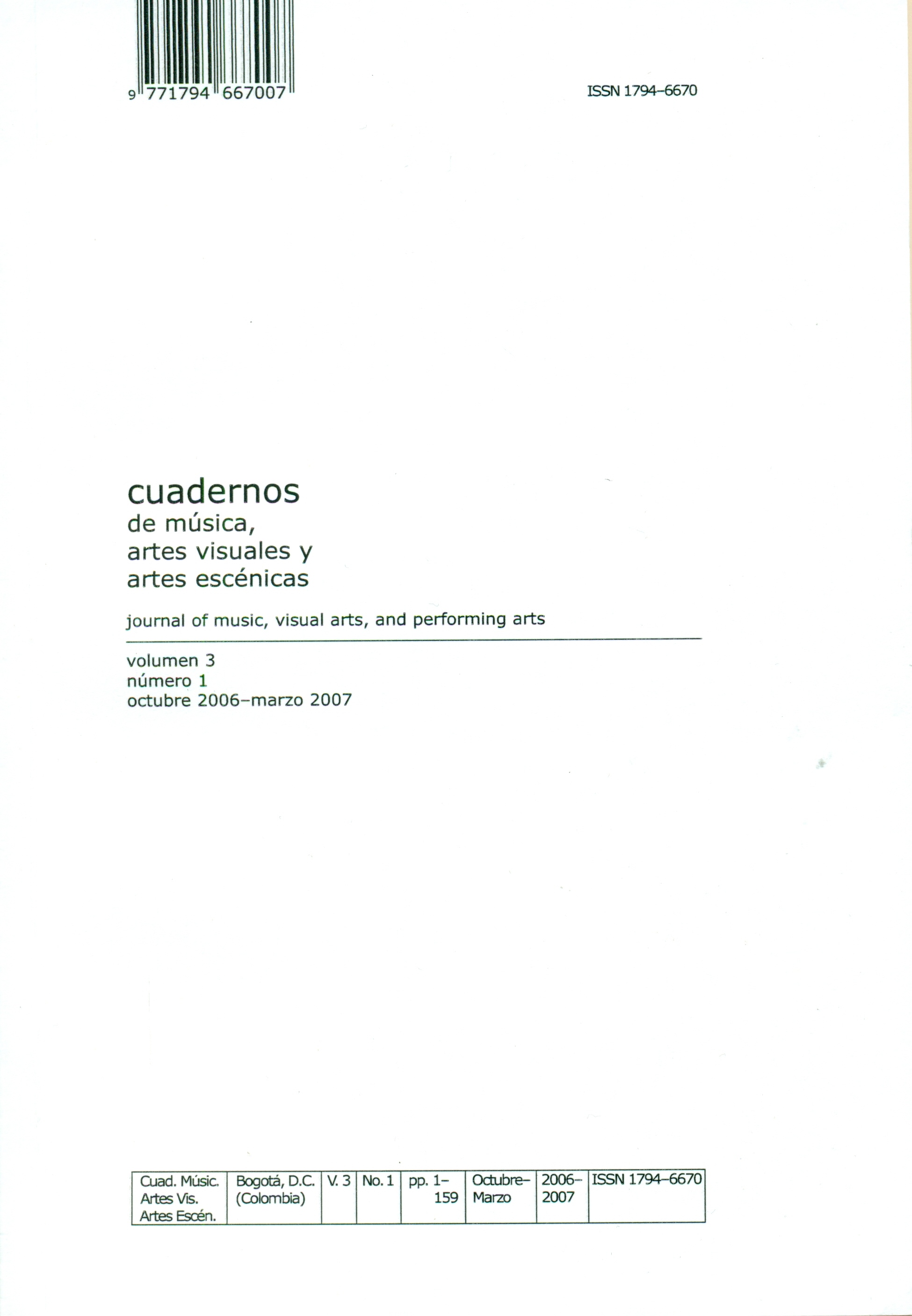Abstract
The habanera genre became fashionable in Europe during the second half of the nineteenth century, inserting Afro–Cuban rhythms into European songs. The present article examines the presence of the habanera (or tango) in the Spanish zarzuela repertory, using significant examples to analyse its musical and dramatic characteristics. Three kinds of habaneras thus emerge: the habanera evoking the sea, nostalgia for tropics (especially the sensuality of tropical women) and, at the end of the century, a decontextualised assimilation leading the genre towards the tanguillo flamenco or converting its musical elements into compositional resources.This journal is registered under a Creative Commons Attribution 4.0 International Public License. Thus, this work may be reproduced, distributed, and publicly shared in digital format, as long as the names of the authors and Pontificia Universidad Javeriana are acknowledged. Others are allowed to quote, adapt, transform, auto-archive, republish, and create based on this material, for any purpose, provided the authorship is duly acknowledged, a link to the original work is provided, and it is specified if changes have been made. Pontificia Universidad Javeriana does not hold the rights of published works and the authors are solely responsible for the contents of their works; they keep the moral, intellectual, privacy, and publicity rights.
Approving the intervention of the work (review, copy-editing, translation, layout) and the following outreach, are granted through an use license and not through an assignment of rights. This means the journal and Pontificia Universidad Javeriana cannot be held responsible for any ethical malpractice by the authors. As a consequence of the protection granted by the use license, the journal is able to publish retractions or to correct information already published. Publishing contents in this journal does not generate royalties for contributors.


